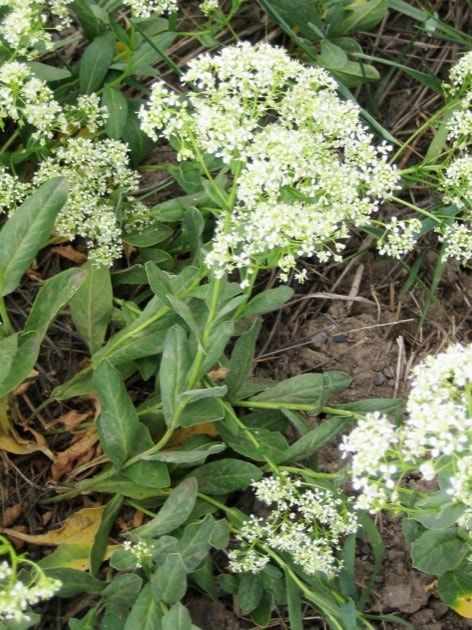Concerns are growing about the spread of invasive plants cropping up in the Cariboo Regional District (CRD).
CRD invasive plant management co-ordinator Emily Sonntag says invasive plants in the South Cariboo are monitored, and many of them are treated by staff, or by property owners who can borrow equipment to spray their own and get herbicide/fertilizer rebates.
However, there are some high-priority species being particularly targeted, including hoary alyssum, hoary cress and perennial pepperweed, she adds.
Sonntag explains all three are members of the mustard family, and are on the top-offenders list primarily because they are fairly new and haven’t taken an overwhelming foothold in the area.
Hoary alyssum spreads quickly by seed into pastures and remote areas making it difficult to control.
“It is toxic to horses, especially in hay.”
Whether brought in by birds, wind or vehicles, it is hard to track its path when the weed turns up far away from any previous infestation, she notes.
When in bloom, Sonntag says, hoary alyssum has a small white flower atop tall rough-feeling stems, and a tap root.
Hoary cress also spreads by seed and develops a cluster of small, fragrant white flowers at the top of the stem and an extensive root system that renders pulling or cutting them ineffective, she adds.
“If you break off pieces, you are going to have new plants ... and the root’s spread on an annual basis is absolutely amazing. Once it’s established, it’s almost impossible to get rid of it.
“Both hoary cress and hoary alyssum we are treating up to three times a year and they are still coming back. So, it is a real resource sap.
Perennial pepperweed also has tiny white flowers and a huge, stubborn root system, and is on the provincial early detection-rapid response list, Sonntag says.
"We have one [tiny] site of it on Highway 97 down in the South Cariboo and we have been treating it for probably 10 years or more."
Effort to combat another relatively new offender that spreads through a large, creeping root system, Russian knapweed, is also underway.
The pink to purple single-stemmed flowers are urn-shaped with papery green bracts underneath.
"It's also toxic to livestock, so we are trying to get a hold on that one as well because it can be pretty damaging to agriculture if gets going."
While there are very few sites of meadow knapweed in the southern region, Sonntag says it also spreads quickly through large-scale seed production, and is on the top priority list.
It forms similar purple-pink flower heads to the meadow variety, but at the top of heavily branched, hairy stems.
Both have lance-shaped leaves and are being hit with herbicide sprays two or three times a year by CRD staff.
Spotted knapweed and diffuse knapweed, which were highlighted as a concern by area ranchers in an Aug. 13 Free Press front page article, are also being targeted along with a host of others, she notes.
"Even though we don't have the funding to deal with all of them, they still are a very high priority, just [for] the grasslands and the affect they can have on them."
See the list of invasive plants and learn how to help control them and more about the loan and rebate program at www.cariboord.bc.ca/services/invasive-plants.
